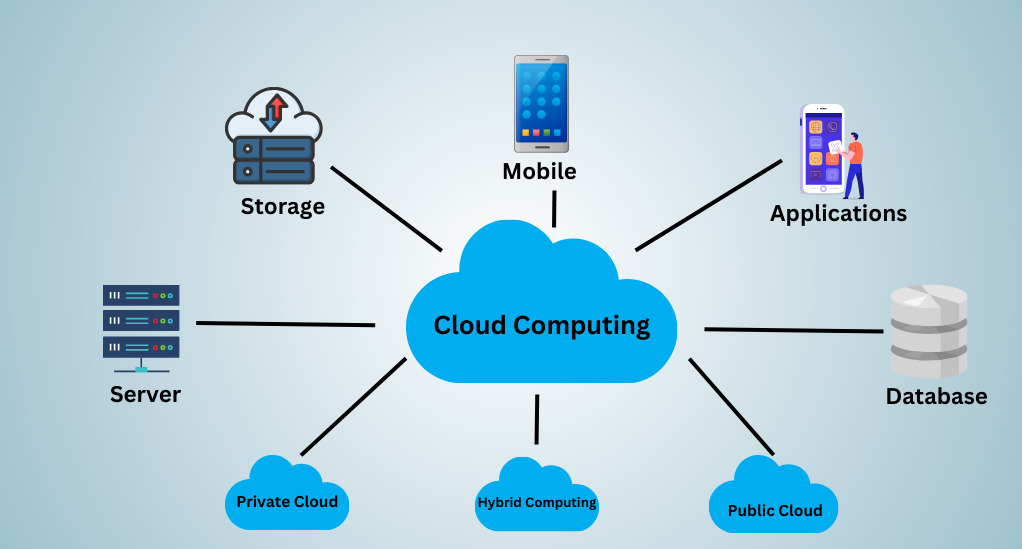Introduction
The shift to cloud hosting is one of the biggest transformations in IT. By enabling scalable infrastructure, real-time collaboration, and automated operations, cloud hosting enhances productivity while reducing cost overhead. But what exactly makes it so powerful in 2025? Let’s explore.
1. Cost Efficiency: Pay for What You Use
Traditional IT setups demand large upfront capital for servers, network hardware, and backup systems. In contrast, cloud hosting uses a pay-as-you-go model, ensuring you only pay for actual usage. This eliminates wasted resources and significantly lowers IT budgets.
According to CloudTech, small businesses can maximize cost efficiency by optimizing applications and scaling only as needed—rather than defaulting to overprovisioning CloudTech cost guide.
2. Scalability & Performance on Demand

Cloud providers like AWS, Azure, and Google Cloud operate hundreds of data centers globally. This dynamic infrastructure allows businesses to scale instantly—whether during peak demand or off-season (TechRadar top providers 2025). No more delays or capital spending on new hardware.
3. Enhanced Collaboration & Productivity
Cloud-hosted tools (e.g., Office 365, Google Workspace) enable seamless remote collaboration with features like real-time editing, shared drives, and video meetings. CloudZero reports that ~60% of executives prioritize ease of maintenance and collaboration as key cloud benefits—and those who implement AI productivity tools can save up to 26 minutes per user per day :contentReference[oaicite:0]{index=0}.
4. Improved Security & Compliance
Security remains a top priority—60% of C-suite executives cite it as the main reason for migrating to the cloud :contentReference[oaicite:1]{index=1}. Major providers invest heavily in encryption, identity management, and patching. Many also offer built-in compliance frameworks for GDPR, HIPAA, and other data regulations, which are difficult and costly to maintain on-premises.
5. Disaster Recovery & Business Continuity

Cloud systems are inherently resilient, often replicating data across multiple regions. Automated backups and quick recovery solutions reduce downtime dramatically. Revolgy emphasizes the cloud’s role in disaster planning, allowing businesses of all sizes to maintain uptime (Revolgy report).
6. Edge & Hybrid Cloud for Faster Results
Edge computing—processing data closer to users—minimizes latency and boosts speed, especially for real-time applications like IoT or video streaming. In 2025, public clouds increasingly support edge architectures :contentReference[oaicite:2]{index=2}. Hybrid models allow companies to balance on-premise control with cloud scalability.
7. Continuous Optimization & FinOps
Cloud cost management is a top priority: ~72% of IT leaders focus on right‑sizing cloud workloads for cost efficiency :contentReference[oaicite:3]{index=3}. Tools for automation, auto-scaling, and analytics help avoid overpayment and reduce IT staff strain.
8. Sustainable & Green Computing
Cloud data centers operate at significantly higher energy efficiency compared to in-house servers. Shared infrastructure not only cuts costs but also reduces carbon footprints—making cloud hosting a sustainable choice for modern business :contentReference[oaicite:4]{index=4}.
Case Study Snapshot
For example, a mid-sized e-commerce business switched to cloud hosting with auto-scaling and backup automation. They saw:
- 30% reduction in infrastructure costs
- 50% decrease in IT maintenance time
- 99.95% uptime with disaster recovery enabled
- Remote team delivered projects 20% faster using cloud tools
Conclusion
Cloud hosting in 2025 offers multiple benefits for productivity and IT cost reduction:
- Operational efficiency via “pay-as-you-go” pricing
- Elastic scalability and edge deployment
- Built-in security and business resilience
- Collaboration tools that unlock daily productivity gains
- Continuous cost optimization and sustainability benefits
Companies embracing cloud onboarding and FinOps strategies can redirect savings to innovation and growth. As digital demands increase—from AI to global remote work—the cloud will remain a strategic asset for boosting efficiency while managing IT spend.








